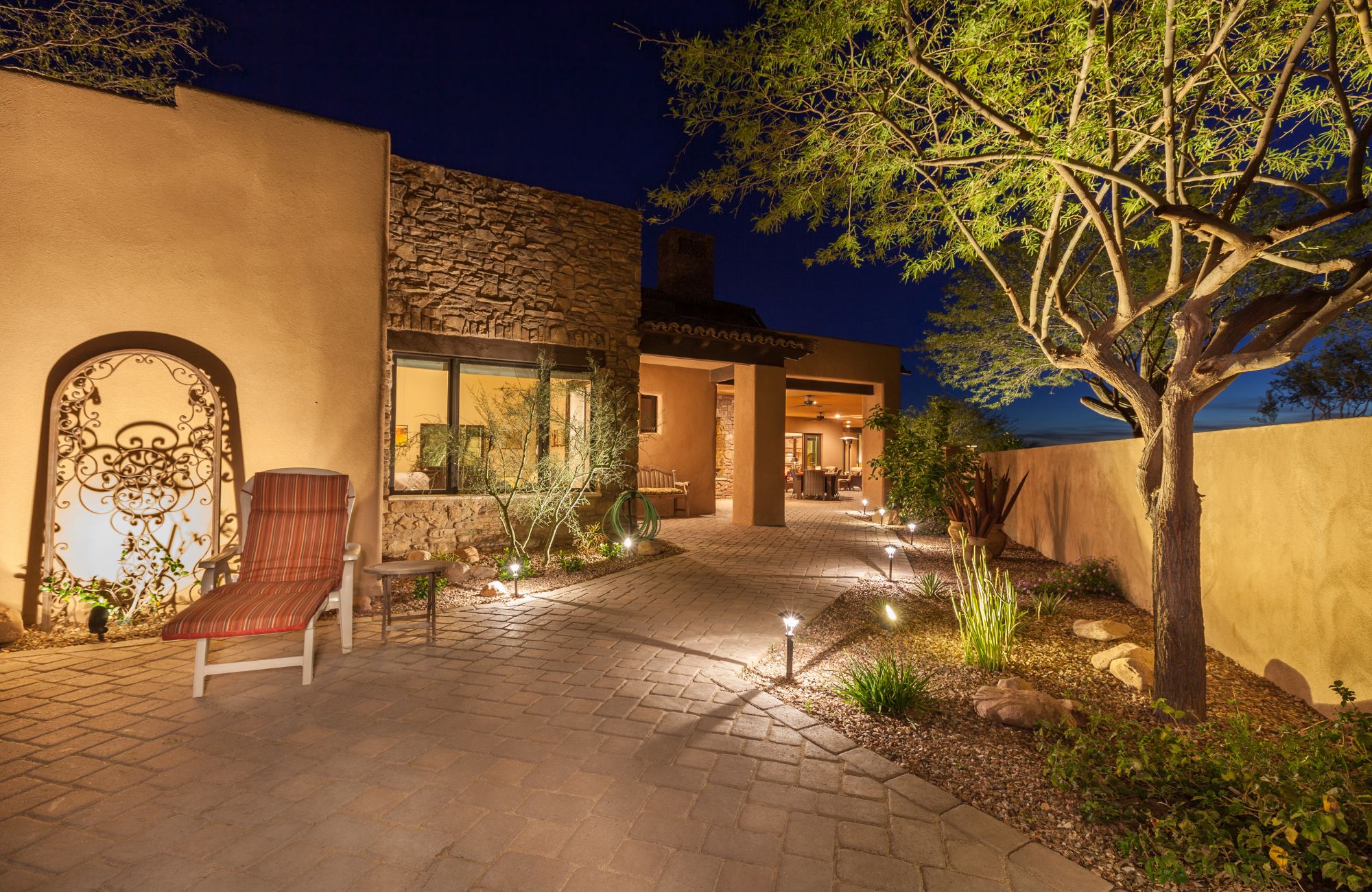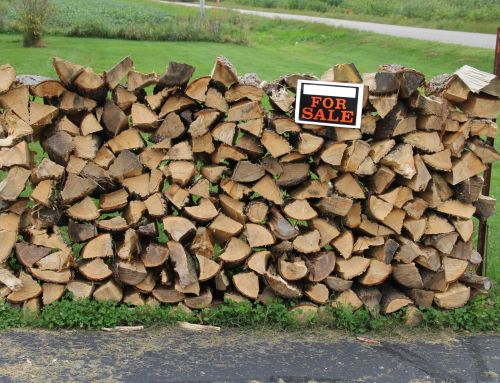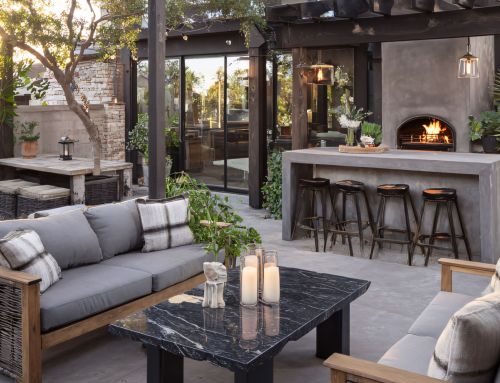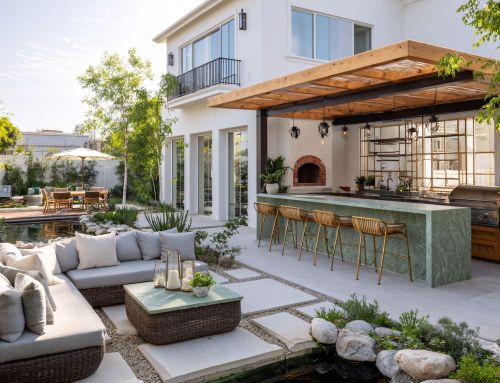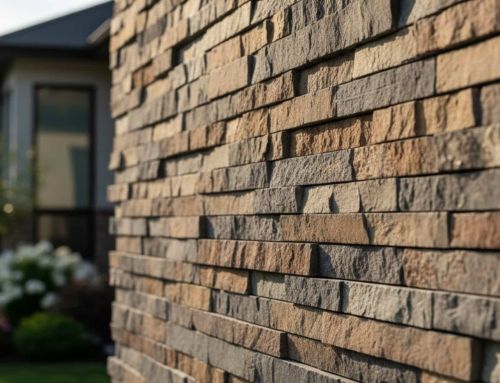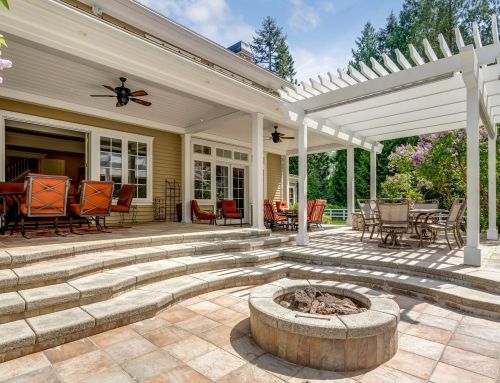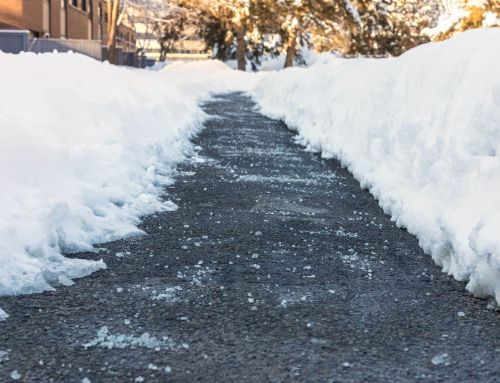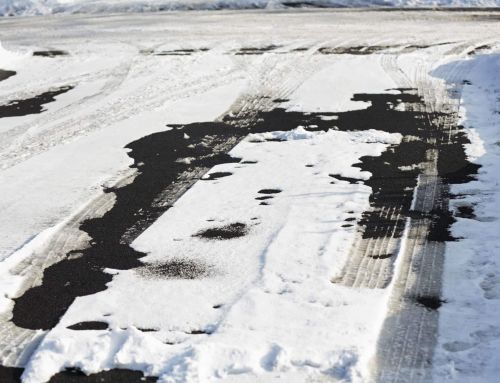Low-voltage lighting is a safe, efficient way to brighten up your outdoor spaces while creating a warm, inviting atmosphere. From lighting up garden paths to highlighting landscaping and boosting nighttime visibility, it’s a smart upgrade for any home.
Operating at just 12 to 24 volts, these systems are easy to install, energy-conscious, and ideal for everything from walkways to patios. In this guide, we’ll break down the benefits, types, and tips for designing a low-voltage lighting system that works beautifully for your yard.
What is Low-Voltage Lighting?
Low-voltage lighting uses a transformer to reduce your home’s electrical power from standard line voltage (120V-230V) down to safer levels of 12V-48V. Most residential landscape lighting systems operate at 12V, making them safe enough to install around water features, in flower beds, and anywhere people might accidentally touch fixtures.
The system works through three main components:
- Transformer: Converts high voltage to low voltage
- Low-voltage wire: Carries safe electrical current to fixtures
- LED lights: Energy-efficient bulbs that create beautiful illumination
Unlike traditional outdoor lighting that requires deep trenching and professional installation, low-voltage systems can be installed with minimal digging. The wire only needs to be buried a few inches deep or can even be covered with mulch.
Benefits of Low-Voltage Lighting
Enhanced Safety
At 12V, these systems pose virtually no risk of electrical shock to people or pets. You can safely install lights near ponds, pools, and in areas where children play. This makes low voltage lighting perfect for any outdoor application where safety is a concern.
Dramatic Energy Savings
LED low-voltage lights use 75-80% less energy than traditional outdoor lighting. A typical 8W LED spotlight produces the same brightness as a 50W halogen bulb. This translates to significant savings on your electricity bill, often saving homeowners over $100 annually on outdoor lighting costs.
Long-Lasting Durability
Quality LED fixtures last 25,000-50,000 hours compared to just 2,000-4,000 hours for traditional bulbs. They generate minimal heat and resist weather damage, meaning fewer replacements and lower maintenance costs over time.
Design Flexibility
Smaller fixtures and safer wiring allow for creative installations. You can easily add lights to enhance trees, illuminate walkways, highlight architectural features, or create ambient lighting for your deck or patio. Many systems include dimming capabilities and smart controls for ultimate customization.
Types of Low-Voltage Lighting Fixtures
Pathway and Garden Lights
Perfect for illuminating walkways, driveways, and garden borders. These fixtures typically use 6–8W and create gentle pools of light that guide visitors safely while enhancing your landscape’s beauty. They also help define outdoor spaces and improve nighttime navigation.
Spotlights and Uplights
Ideal for highlighting trees, walls, and architectural features. Available in various beam angles and wattages (8W–15W), these fixtures create dramatic accent lighting that transforms your property after dark. They add depth and dimension to your landscape design.
Deck and Step Lights
Recessed options that install directly into decking, stairs, or retaining walls. These provide essential safety lighting while maintaining a clean, modern appearance. They’re especially useful for preventing trips and falls in low-light conditions.
String Lights and Strips
Create a festive atmosphere for entertaining areas. Modern LED strips can illuminate large areas efficiently while adding ambiance to patios, pergolas, and outdoor living spaces. They’re flexible, easy to install, and perfect for seasonal or permanent use.
Cost Analysis and Savings
Initial Investment
- Basic 6-light pathway system: $200-400
- Mid-range 12-light landscape system: $500-800
- Premium smart system with 20+ lights: $1,000-2,000
Operating Costs
A typical 12-light LED system costs approximately $25–35 per year to operate, compared to $150–200 for equivalent halogen lighting. The energy savings alone often pay for the system within 3–5 years. Over time, you’ll also save on maintenance and bulb replacements, making LED systems a smart long-term investment.
Long-Term Value
With LED lifespans of 20+ years and minimal maintenance requirements, low voltage systems provide an excellent return on investment. They also increase property value and enhance curb appeal, making your home more attractive to potential buyers. Plus, the added safety and nighttime visibility improve both function and aesthetic charm.
Maintenance and Troubleshooting
Low-voltage systems are easy to maintain. Simply check for damaged fixtures or loose connections, clean fixture lenses, trim nearby vegetation, and inspect the transformer and wiring as needed. Regular upkeep helps ensure consistent performance, improves safety, and extends the lifespan of your outdoor lighting system.
Common issues and solutions:
- Dim lights: Check for loose connections or voltage drop over long wire runs
- Flickering: Usually indicates poor connections or incompatible dimmer
- Complete failure: Test transformer output and check main breaker
Smart Technology Integration
Modern low-voltage lighting easily integrates with smart home systems, offering greater convenience, energy efficiency, and control. With features like smartphone control, motion sensors, programmable timers, and color-changing options, you can customize your outdoor lighting to fit any occasion or need.
Many smart lighting systems also use mesh networks, allowing each light to extend the signal range. This ensures consistent, reliable control across your entire property, even in larger outdoor spaces.
Choosing the Right System
Key Considerations
- Voltage: 12V for most residential applications
- Transformer capacity: 20-30% larger than your calculated load
- Fixture quality: Look for IP65+ weather ratings and solid warranties
- Wire gauge: 12 or 14 gauge for most applications
- Professional vs DIY: Simple systems work well for DIY, complex designs benefit from professional design
Where to Buy
Landscape supply stores, electrical suppliers, and online retailers offer various options. Look for complete starter kits that include a transformer, wire, connectors, and fixtures for easier installation. These kits are especially helpful for beginners and can save time compared to sourcing individual components separately.
Seasonal Considerations
- Spring: Ideal time for installation as you can coordinate with landscaping projects and avoid extreme weather.
- Summer: Systems work efficiently in hot weather and provide extended evening enjoyment of outdoor spaces.
- Fall/Winter: Ensure connections are secure before cold weather. Many systems include frost protection and continue operating reliably year-round.
Conclusion
Low-voltage lighting is one of the most effective ways to enhance your outdoor space with safety, energy efficiency, and long-lasting beauty. Whether you’re lighting a pathway, highlighting a garden, or creating ambiance for evening gatherings, these systems offer incredible flexibility with minimal maintenance. From smart controls to weather-resistant fixtures, the right setup can transform your landscape into a functional and inviting extension of your home.
Ready to upgrade your outdoor lighting? Visit Old Station Outdoor & Landscape Supply in Norton, MA, for top-quality low-voltage lighting systems, transformers, and accessories. Whether you’re a homeowner tackling a DIY project or a contractor planning a full-scale install, our team is here to help you choose the right products and offer expert guidance. Stop by our showroom or contact us today to get started.
FAQs
What is considered low-voltage lighting?
Low-voltage lighting operates at 12-48 volts (most commonly 12V for residential use) instead of the standard household voltage of 120V-230V, requiring landscape lighting transformers to step down the power.
What are three disadvantages of low-voltage lighting?
The main disadvantages are higher upfront costs for quality LED fixtures, potential voltage drop issues over long wire runs, causing dimmer lights, and transformers that may need to be replaced over their lifetime, unlike cheaper traditional systems.
What are low-voltage lamps used for?
Low-voltage lamps are primarily used for outdoor applications in your yard, including pathway illumination, garden accent lighting that works from dusk until sun comes up, and highlighting features with fixtures installed at ground level around your house.
Can you install low-voltage landscape lighting yourself?
Yes, most homeowners can learn to install low-voltage lighting systems themselves using basic tools since the 12V current is safe to work with, helping you save money on installation costs, though you may need an electrician to connect the transformer to your home’s electrical panel.

